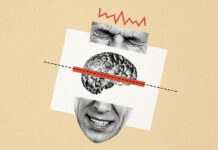A new study, published in JAMA Psychiatry, examines ethnoracial disparities in pathways to treatment in youth experiencing first-episode psychosis.
Researchers found differences between ethnoracial groups experiencing psychotic symptoms regarding how quickly they received care and where (emergency department, law enforcement, mental health, etc.) they gained access to treatment. They conclude by offering suggestions about addressing these disparities at both organizational and systemic levels.
The authors, led by Els van der Van of Vrije Universiteit Amsterdam write:
“Disparities in pathways to care, typically characterized by source of referral and type of first mental health contact, have been found between majority White individuals and under-served racialized and ethnic (hereafter, ethnoracial) groups. Studies from Europe and Canada have demonstrated that Black Caribbean and Black African individuals with psychosis experience more negative pathways to care, including high rates of compulsory admissions and police involvement compared with majority White groups.”
 Previous studies on ethnoracial disparities in treatment pathways have centered on differences between marginalized ethnoracial groups and non-Latinx White individuals, which operates from the assumption that White persons are the norm that other groups deviate from.
Previous studies on ethnoracial disparities in treatment pathways have centered on differences between marginalized ethnoracial groups and non-Latinx White individuals, which operates from the assumption that White persons are the norm that other groups deviate from.
In the current study, van der Van and colleagues use a cultural variant model, which takes into consideration how the different intersections of an individual’s sociodemographic background, including race and ethnicity (in this study, Latinx, Asian Black, White, multiracial, and other/unknown) as well as gender, sexual orientation, living situation, type of health insurance, and so on, determine how individuals are influenced by disadvantage/privilege.
To explore ethnoracial differences in time-to-treatment access, researchers analyzed data from OnTrackNY, comprised of a network of coordinated specialty care (CSC) programs across New York State that provide: “recovery-oriented, evidence-based psychosocial interventions and medications to young people experiencing early psychosis.”
Using OnTrackNY data, researchers created different “clusters” of individuals based on their first contact with mental health treatment and social position. The first cluster of individuals was the largest at 34.6%. It consisted of predominantly minority ethnoracial groups (except for 1 White individual) who were hospitalized and experienced positive symptoms, including hallucinations, delusions, and paranoia. They also tended to exhibit violent behavior. Most persons in the first cluster were referred to treatment by their family (78%) or had first contact with mental health treatment via psychiatric hospitalization (75.9%).
The second cluster of persons included mostly White, more economically advantaged individuals who tended to report a mix of symptoms and be treated at sites outside of the city. Most individuals in this group had private insurance (67%) and were psychiatrically hospitalized for their first contact (60%). However, this group was the largest proportion of individuals whose first contact was with OnTrackNY at 4.3%.
The third grouping of participants was the most entho-racially diverse and consisted of younger individuals (most under 21), the highest percentage of sexual minorities (29%), and women (8.5%). Individuals in this group were most likely to be referred to care through their schools and were typically treated in the emergency department and were not admitted to inpatient hospitalization. Most persons in this group received outpatient or primary care as their first contact (28%). There were no particular symptoms that stood out for this group.
The fourth cluster consisted of persons who were predominantly Asian (18%) and Latinx (49%), non-English speakers, and all had symptoms of depression (100%) as well as the highest rates of suicidality (42%), hallucinations (79%), and paranoia (86%). Most individuals in this group were treated at sites located in the city (81%) and were referred to care by a mental health professional.
The fifth group included primarily Black (63%) and older persons. Individuals in this cluster had the highest rates of public insurance. In addition, 49% of persons in this grouping were homeless, and 40% lived alone. They were the most likely of any group to have their first contact to care occur via law enforcement (11%), most often to be referred from emergency services (25%), and were more likely to be referred by the criminal justice system (4%). This group had low rates of depression and high rates of violent behavior in comparison to other groups.
When comparing these groups, researchers found that the group consisting of primarily White individuals differed the most from other groups. They discovered that ethnoracial minorities, including Black, Asian, Latinx, and multicultural individuals, had more extended periods between first contact for services (36-44 days for BIPOC individuals; 17 days for White individuals) but a relatively short first contact to CSC pathways when compared to White individuals.
Similar patterns were found when comparing groups of predominantly Asian and Latinx individuals with the White, privately insured cluster–they had longer onset for first contact and shorter onset for contact to CSC.
When comparing overall symptom onset to access to CSC pathways, rates varied inconsistently among marginalized ethnoracial groups – the first group, which consisted of individuals of predominantly minority ethnoracial backgrounds, had a median of 140 days from symptom onset to CSC, while the fifth cluster, which included primarily Black persons, had a median of 201 days.
The researchers offer a few explanations for these differences in access and pathways to care:
“A possible explanation is that marginalized groups have shorter and perhaps more challenging first contact to CSC pathways that include police contact and emergency services, whereas White patients may be more likely to receive outpatient mental health care and ultimately get referred to CSC. However, it is also possible that the relatively short care pathway to OnTrackNY for disadvantaged individuals is due to a lack of involvement of other mental health services or to the accessibility of and engagement strategies practiced by CSC services, which are designed to limit barriers to services.”
Delays in receiving care can significantly negatively impact the individual in need. For example, delaying treatment even by three weeks has been shown to lead to an increase in more severe symptoms by more than 20%.
However, Van der Van and colleagues’ findings differ from other studies across the UK, Canada, and the US, which found shorter periods of untreated psychosis in Black individuals. However, the authors point out that only examining untreated psychosis as opposed to looking at different stages along the process of pathways of care may not reveal ethnoracial disparities across the care continuum.
Further, they emphasize that quick access to treatment could be the result of negative pathways to care, such as lower tolerance of perceived deviant behavior in minority groups, as evidenced by research elsewhere that highlights how youth from marginalized racial groups are more likely to be hospitalized against their will, and that Black individuals with first-episode psychosis are at higher risk of coercive treatment. On the other hand, receiving treatment quickly could result from positive pathways, such as fast access to specialized care.
Limitations of the study include that due to the nature of the OnTrackNY data, which clinicians generated, it could be influenced by clinician bias, and researchers were unable to conduct validity and reliability assessments. Also, the study had limited measures of socioeconomic status and is grounded in the context of the US healthcare system.
Lastly, issues like stigma and potential misrecognition of symptoms were unaddressed, which is critical given that Black persons are almost twice as likely to be diagnosed with schizophrenia than White individuals, which may be due to clinician bias and misdiagnosis.
The researchers conclude by emphasizing the need to include service users in research, examine why youth may mistrust or not want to engage in CSC services, and increase access to mental health care in schools.
At the systemic level, the school-to-prison pipeline for Black and Latinx youth and the disparities in the handling of behavioral and mental health crises need to be examined. Elsewhere, research has shown that White children’s problem behaviors tend to be medicalized, whereas Black children’s problem behavior is criminalized.
****
van der Ven, E., Jones, N., Bareis, N., Scodes, J. M., Dambreville, R., Ngo, H., Mathai, C. M., Bello, I., Martínez-Alés, G., Mascayano, F., Lee, R. J., Veling, W., Anglin, D. M., Lewis-Fernandez, R., Susser, E. S., Compton, M. T., Dixon, L. B., Wall, M. M. (2022). An intersectional approach to ethnoracial disparities in pathways to care among individuals with psychosis in coordinated specialty care. JAMA Psychiatry. doi:10.1001/jamapsychiatry.2022.1640 (Link)















Disparity might cease when humans stop taking seriously phrases like…
“cluster of persons”.
All Are Equal.
All individuals are unique and are blessed miracles of life.
On the other hand my learned gentleman Sam Ruck might say DID is a cluster of persons trying to navigate their way home to the heart of the beautiful carer.
When breakdowns happen it feels like disintegrating into being a cluster of persons, which is why my breakdowns are glorious. For me becoming a loose cluster of persons is liberating.
Report comment
There can only be one pathway of treatment for “psychosis” and it is the same for all races, no treatment.
Joshua
Report comment
So true, especially given the fact that the antidepressants and antipsychotics can create “psychosis,” via anticholinergic toxidrome.
https://en.wikipedia.org/wiki/Toxidrome
And the ADHD drugs can also create “psychosis.”
https://www.healthline.com/health-news/some-adhd-meds-may-increase-psychosis-risk#Higher-risk-for-some-drugs
Given these facts, “treatment” with the psych drugs is likely the primary cause of most “psychosis.”
Report comment
Or in other words…….
https://www.youtube.com/watch?v=3nzoPopQ7V0
Not a lot changed since the 70s huh? Okay, so they’re not going to the moon but all that money made from the pandemic….. what do you mean money from the pandemic I hear you ask? You didn’t see any of the millions paid by the taxpayer to companies already making huge profits…. and which they are not going to return? Sorry to hear that.
Do the people who are going into ‘space’ have anything in common?
Report comment
“delaying treatment even by three weeks has been shown to lead to an increase in more severe symptoms by more than 20%.”
Do you have a footnote to show actual evidence of this statement?
Report comment
Is it originally:- Psychosis or Intoxication? Once a person gets misdiagnosed and goes onto “antipsychotics” they are in danger of becoming longterm mentally Ill.
This is what happens to 9 out of 10 of the racially divergent so called Longterm Mentally Ill.
Report comment
I think there is something to be said by the people who found themselves wrongly convicted of crimes.
Once the fraud takes effect, others seem more than willing to use that fraud (despite knowing it is fraud) to utter with and ensure the outcome they would prefer.
In my instance, the ‘spiking’ with date rape drugs became the ‘symptoms’ of my ‘illness’ (all documented) which, according to the fraud …. I mean Senior Medical Officer, required the forced administration of the drug I had been ‘spiked’ with (causing the symptoms he had described) AND a ‘chemical kosh’ to ensure I didn’t get the right to speak. Still, he was concealing crimes for the Police by this time and no doubt receiving some preferential treatment in return.
Mind you, I note that Australia is very different to other places, where attempting to report corrupt public officers (trying to avoid the mandatory reporting clause of the corruption watchdog) is not justification for an unintended negative outcome in an Emergency Dept. Being able to ‘treat’ allegations of torture, much better than actually allowing the Articles of the Convention to take their course. And I mean who would dare say anything in such an environment? Where your ‘legal representative’ will provide material assistance to ensure the silence of the victim……. for an increase in State funding.
I note the increase in funding to our “Community Legal Centres” who are ‘sponsored’ by Police. This ‘access to the law’ program, nothing more than a method of exploiting the trust placed in these people, with little if any ‘oversight’. The benefits for the State with such a ‘warning system’ enormous when it comes to ensuring the complaints process is thwarted before it even gets underway. Half a million nothing compared to the money they save by outcoming people with legitimate complaints about human rights abuses.
And you can imagine how the Police ‘sponsorship’ of these law centres conflict of interest is handled (if not, I can explain how they make written complaints and then forge and utter with responses purportedly from ‘authorities’ such as the Chief Psychiatrist). Your confidentiality breached and your going to do what about it nutjob? s. 195 Police referral for mental health treatment please. Complaint marked “processed”, “expedited” or “deleted”.
One needs to recognise how this network of informants is operating (see for example the use of Nicola Gobbo as a Police informant). Ensuring that matters do not proceed to the relevant authorities critical in perverting the course of justice.
Seems funny that our journalists express disgust that Bashar al Assad is doing the same thing in Syria. But then again, after the way that Jamal Kashoggi got ‘treated’ is it any surprise they say nothing about ‘our’ little indiscretions?
Report comment